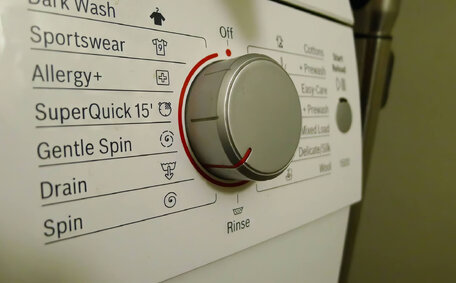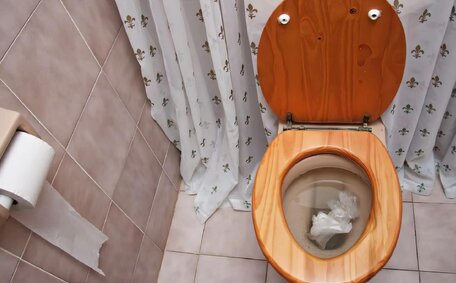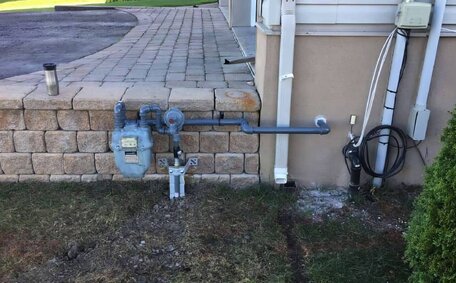Gas water heaters depend on a pilot light to ignite the burner and warm the water.
Accessing the pilot assembly, turning gas valves, and operating igniters should only be attempted with caution. Most homeowners with a grasp of the relighting process can safely rekindle their heater’s pilot when required.
Incorrect lighting can cause significant fire or explosion hazards, emphasising the need for proper procedure.
Safety Precautions to Take Before Relighting
Before relighting your gas water heater’s pilot, adhere to these crucial safety precautions:
- Check for any gas odour near the unit and do not proceed if gas is smelled
- Ensure there are no open flames or ignition sources nearby
- Meticulously adhere to the manufacturer’s instructions for relighting
- Switch off the gas using the control valve and wait 5 minutes to clear any residual gas
- Keep children and pets away from the area
- Choose a proper igniter in advance, compatible with your heater model
- Work in a well-ventilated area to prevent gas accumulation
- Do not smoke or have any other ignition source present
Locating the Pilot Light Assembly
To relight the pilot on your gas water heater, you first need to locate the pilot light assembly. Here are some tips for finding it:
- Check around the base of your water heater tank for a removable access panel. This is usually held on with screws or clips.
- Removing the access panel reveals the gas control valve and a tube that directs gas to the pilot light.
- Look for manufacturer labelling with instructions for lighting the pilot. This is often located right inside the access panel.
- You may need to shine a flashlight to see further back behind the gas valve to spot the pilot tube and nozzle.
- If the pilot assembly isn’t at the base, check higher up the tank or refer to the manual.
- The pilot will have a small opening or slit for the flame. There may be a spark igniter button as well.
How Gas Control Valves Work
Gas control valves play a key role in safely operating your gas water heater. They regulate the gas flow to the pilot light and main burner.
These valves have knobs or switches that allow you to control the gas. Common positions are:
- Off - Shuts off all gas to the water heater.
- Pilot - Allows gas only to the pilot light.
- On - Enables gas flow to both the pilot and main burner for heating the water.
Changing positions requires gently turning or pressing the knob—avoid using tools or excessive force. Turning to Pilot or On will activate the starter mechanism to light the pilot. Once lit, you must hold the knob in for 30-60 seconds before releasing for the pilot to stay lit.
Some valves are fitted with an indicator light signalling the pilot is ignited. For the operation of your specific water heater’s gas valve, refer to your manual. Proper use is crucial both for lighting the pilot and for safely shutting off the unit when needed.
Step-by-Step Instructions for Manually Relighting the Pilot
Once you have located the pilot assembly and are familiar with operating the gas control valve, follow these steps to manually relight the pilot light:
- Rotate the gas control valve completely to the Off position and pause for 5 minutes.
- Remove the access panel to expose the pilot assembly.
- Turn the gas control knob to the Pilot position, an essential step in understanding how relight the pilot effectively. You should hear a clicking sound as the igniter activates.
- Depress and hold the knob to initiate gas flow towards the pilot tube.
- Ignite the pilot via persistent pressing of the igniter button until lit, or apply a flame straight to the pilot.
- Keep holding the gas control knob in for 30-60 seconds once lit before releasing.
- If the pilot goes out when released, repeat steps 3-6.
- Once the pilot stays lit, turn the gas control knob to the On position.
- Replace the access panel and wait for the burner to ignite and start heating water.
- Set the temperature dial to the desired setting.
- If the pilot repeatedly goes out, call a professional for assistance.
Using Electronic Ignition to Relight the Pilot
Many modern gas water heaters feature electronic ignition, eliminating the need for a manual lighting tool. To identify if your unit has this, look for a black or red igniter button near the pilot assembly.
Follow this procedure to relight the pilot on a water heater with electronic ignition:
- Turn off the gas control valve and wait 5 minutes to allow any unburnt gas to dissipate, preparing to safely light your pilot.
- Remove the access panel and locate the igniter button.
- Turn the gas control knob to the Pilot position. You should hear a clicking sound as the igniter starts sparking.
- Press the control knob all the way in and hold to start gas flow to the pilot.
- Depress and hold the igniter button until the pilot is lit, which may take up to 30 seconds.
- Continue holding the gas control knob in for an additional 30-60 seconds once lit before releasing.
- If the pilot goes out when released, repeat steps 3-6.
- Once the pilot stays lit after releasing the knob, turn it to the On position.
- Replace the access panel and allow the burner to ignite and begin heating water.
- Set the temperature dial to the desired temperature.
- If the pilot repeatedly goes out, call for professional service.
Electronic ignitions sidestep the need for manual lighting tools. Ensure the gas control knob is held down sufficiently to heat the thermocouple and engage the safety feature before releasing.
Testing the Thermocouple
To test if the thermocouple is working properly when relighting the pilot:
- Light the pilot and hold the gas control knob in for 30-60 seconds until the thermocouple heats up and activates.
- Release the gas control knob and check that the pilot remains lit. If it goes out, this indicates a problem with the thermocouple.
- With the pilot lit, disconnect or loosen the thermocouple at the gas valve. The pilot should go out immediately. Tighten it back in place.
- After relighting the pilot, twist the gas control knob to Off. The extinguishing of the pilot, which should not reignite autonomously, confirms the thermocouple is correctly terminating the gas supply.
If the pilot won’t stay lit or relights itself after testing, the thermocouple likely needs cleaning or replacement. Properly testing this safety component helps diagnose pilot light issues and determine if professional service is needed.
Troubleshooting Issues with Relighting the Pilot
- Check that the gas supply is turned on and reaching the water heater. Listen for gas flow sounds when the knob is pressed in.
- Inspect the pilot assembly for dirt buildup or debris blocking the pilot tube. Clean thoroughly using compressed air or a pipe brush.
- The igniter may need replacing if its no longer producing a spark. An absence of clicking sounds also indicates a bad igniter.
- Look for cracked or damaged thermocouple wires. These can interrupt the electrical signal and cause pilot issues. Replace if faulty.
- If the pilot tubing is crimped or showing corrosion, it can restrict gas flow. Attempt straightening or replace if needed.
- Have a professional service the unit if the pilot assembly requires disassembly to clean or repair.
- For repeated pilot outages, the gas control valve itself may need servicing or replacing by a qualified technician.
It’s vital to handle gas systems with care and respect for the inherent risks involved.
When to Call a Professional Plumber
- If you smell gas but can’t locate the source, call the gas company immediately, then contact a plumber to inspect for leaks.
- If the pilot assembly area is very dirty or filled with debris that you cannot adequately clean yourself.
- If accessing the pilot requires dismantling components beyond your skill or comfort level.
The professionals at Padstow Plumbing excel in resolving pilot and gas valve dilemmas, servicing units, and conducting necessary repairs.
Don’t hesitate to call 1300 349 338 or email us for assistance relighting your water heater’s pilot or solving recurring pilot problems.
Maintaining Your Water Heater for Optimal Performance
Consistent upkeep is crucial for the efficiency of your pilot light and water heater, preventing typical ignition troubles. Replace the igniter battery if applicable. Annually, inspect the gas control valve, thermocouple and tubing for wear. With proper maintenance, your water heater will operate safely for years to come. Preventative care also avoids costly emergency repairs down the road. Proper maintenance keeps your water heater performing optimally.
Inspect the pilot assembly biannually for contaminants and deterioration. Additionally, employ a licensed plumber every two to three years for a thorough review, ensuring system cleanliness, proper ventilation, and the overall integrity of the water heater’s components.






